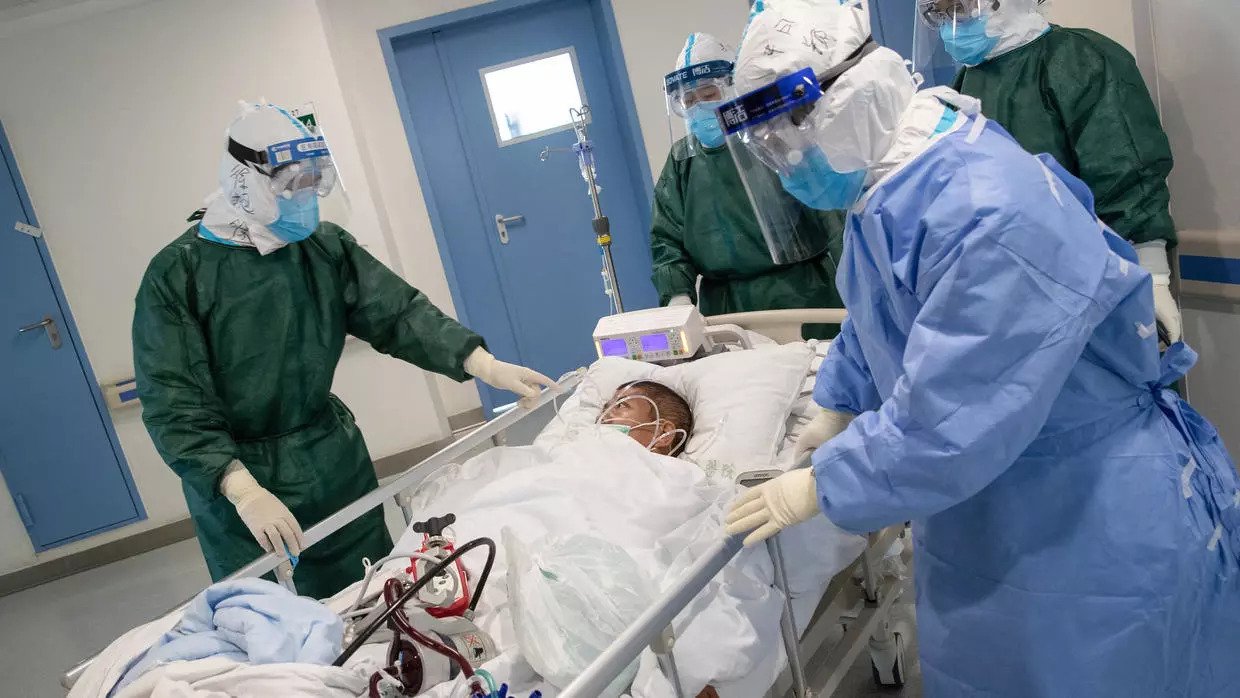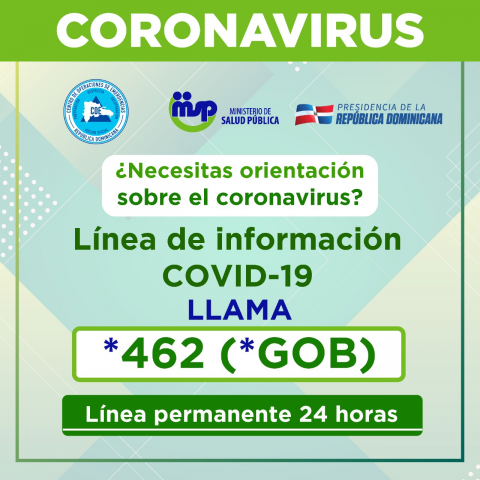CORONA VIRUS INFORMATION CENTER
What is the CoronaVirus Covid-19?
The CoronaVirus is an infectious disease now causing a major pandemic around the world. It causes a respiratory illness similar to the flu, with symptoms such as dry cough, fever, and in more severe cases, difficulty breathing. The outbreak was first detected in the city of Wuhan, in China in December 2019 and since then it has spread to virtually every country in the world. It was later officially named Covid-19 as it relates to other similar viruses such as SARS (severe acute respiratory syndrome)and MERS (Middle East respiratory syndrome). The name Corona relates to the crown-shaped structure that surrounds the virus, and is not exclusive to the Covid-19.
What are the Symptoms and Incubation Period?

The most common symptoms of the Covid-19 are fever, tiredness, and dry cough. Lately it has been reported that loss of taste and smell are being associated with it due to its effect to brain receptors that handle those senses (read sources below).
Shortness of breath can also occur, in which case you should immediately seek medical attention following your local government guidelines. The Dominican Republic has a Coronavirus HOTLINE: *462 (dial asterisk 462 on your phone) in Spanish only until further notice. The incubation period is reportedly 14 days, in some cases it might be longer.
Symptoms may appear between 2-14 days, and people infected have no symptoms during the incubation period and can infect others. Emergency warning signs are trouble breathing, persistent pain or pressure in the chest, new confusion or inability to arouse, Bluish lips or face; depending on each individual medical history, always follow your physician advice. Covid-19 symptoms can be confused with the flu, and many people are panicking with no reason, overwhelming hospitals and testing centers; this only causes more trouble for those who really need the tests and specialized medical attention.
CORONA VIRUS PREVENTION
Since there is no vaccine yet, prevention of the Coronavirus is achieved through constant hygiene and social distancing. The virus enters the body through the nose, eyes and mouth so it is important to thoroughly wash the hands using soap, 70% alcohol or alcohol-based hand sanitizer.
- Avoid touching your eyes, nose and mouth, practice extra hygiene measures as needed, at home or outdoors.
- Wash your hands for at least 20 seconds with soap and water, or using alcohol based hand sanitizers; after blowing your nose, coughing or sneezing. Also after using the bathroom, before and after preparing meals; feeding or stroking your pet, or after going outside your home.
- Maintain a distance of 6 feet from anyone coughing or sneezing to avoid droplets in the air sprayed by the sick person.
- Practice social distancing following local government regulations to avoid the spreading of the disease. Avoid shaking hands or kissing cheeks.
- Create a buffer zone where you sanitize groceries you buy in stores, before you enter the interior of your home.
- Take off your shoes outside, and place used clothing worn to go out in a bag, then take a shower or wash yourself with soap and water.
ON VIDEO: THE COVID-19
CORONAVIRUS PERSISTENCE
According to a recent study published in the New England journal of Medicine, the SARS-CoV-2, the virus that causes the Covid-19 Coronavirus, can live in the air and on surfaces between several hours and several days. The study found the following data:
- The virus is viable up to 72 hours on plastics, 48 hours on stainless steel
- 24 hours on cardboard, 4 hours on copper, and detectable in the air for 3 hours.
- You are more likely to catch the virus in the air from someone infected (coughing, sneezing) than from a surface.
The USA Centers for Disease Control (CDC) guidelines include the following advice:Clean and disinfect surfaces that many people come in contact with. These include tables, doorknobs, light switches, countertops, handles, desks, phones, keyboards, toilets, faucets, and sinks. Avoid touching high-contact surfaces in public. Washing your hands often will keep you from bringing the virus to your T zone (eyes, nose and mouth).
PERSONAL PROTECTIVE EQUIPMENT
When an outbreak like the Coronavirus reaches the population, it is normal to feel the need to get personal protective equipment (PPE) that would otherwise be found in hospital and lab settings. The most widely used PPE are face masks and gloves, and there is already a shortage due to hoarding by people all over the world. Here some quick tips on using PPE and what to avoid:
Face Masks: There are several types of face masks and respirator masks in the market, the most common one being the surgical mask and the N95 respirator. These are made by the company 3M, and follow strict guidelines to filter very small particles in the air, up to a 95% level of efficiency. Any mask you wear should seal around the face, so be sure to get the proper size/fit. Surgical masks are made to keep sick people from spreading droplets, or doctors from getting germs when close to a patient; surgical masks are not certified to protect against Coronavirus or any other small particle germ in the air.

What about Dust masks? Dust masks are not NIOSH approved disposable filtering face pieces. They can be worn for comfort against non-toxic nuisance dusts during activities like mowing, gardening, sweeping and dusting. These masks are not respirators and do not offer protection against hazardous dusts, gases or vapors.
Can we use Homemade Masks? Due to the shortage of PPE, yes. Homemade masks will have an effectiveness of 30% if compared to certified respirators, but still is better than wearing nothing. Best scenario is to stay away from crowds and coughing people if you can. Layers are key to making an effective mask. It’s also key to have a mask that forms a snug seal over the mouth and nose, so that particles can’t get in through gaps.
Masks with a silky outer layer (if possible), middle layer of a thick, tightly woven material like nylon or cotton, and then a comfortable cotton on the inside are ideal. Skip the wool or other fabrics that can cause allergies or irritate your skin. Learning how to use and remove face masks is critical, see the included videos in this tutorial. Are you doing your own mask? visit this link for tips.
Should I wear rubber gloves? the use of gloves certainly can add a layer of protection, as long as you know who to use them. Putting on and removing gloves might sound easy, though it does take some knowledge. Take a minute to watch the videos below, if you need them in Spanish please do a quick search on YouTube.

What About Protecting the eyes? If someone sneezes close to you let`s say, in the supermarket, it might reach your eyes and you can get infected. That is why those who have cough or sneezing must wear a surgical mask. If they don`t, then others are at risk. Just get any sealed glasses such as swimming goggles, lab glasses (Uvex type), or the ones used by woodworkers sold on the hardware store.
Even a ski mask works, for real. Many people think this is overkill, it all depends how you feel about your health safety vs the techie fashion look you get. Also consider how you expose your hair when going out. Consider the fact that the virus lingers in the air after someone sneezes, so try to wear it in a way that will not become a trap for virus particles. Men are using baseball caps, women a bun.
HIGH AND LOW RISK SITUATIONS
The Coronavirus will mostly be felt like a regular flu by 80% of the population, those are the low risk group. Generally, this group has good health and has less than 60 years of age. Some recent cases are proving this wrong, but this is the general assessment. High risk groups are people with preexisting health conditions such as Cardiovascular disease, Respiratory condition and Diabetes. If you are sixty years or older, or have a preexisting condition, please stay away from crowded areas. The mortality rate of the Coronavirus is low to most people, but it is still very dangerous as there have been more than 23,000 deaths worldwide as of March 29th, 2020.
HOW TO WASH YOUR HANDS
HOW TO USE A FACE MASK
HOW TO USE RUBBER GLOVES
HOW SOAP KILLS CORONAVIRUS
DOMINICAN REPUBLIC CORONAVIRUS UPDATES
Covid-19 Official Updates
The Ministry of Public Health of the Dominican Republic is the official source for all the data related to the Covid-19 Coronavirus outbreak in the Dominican Republic. The site is in Spanish, please use www.translate.google.com to view in other languages.

TRUSTED NEWS SOURCES
These days, a lot of people publish fake news in the social media, so it is better to have a list of good, trusted sources where we can double check information we see online. The following sources below can be cross-checked every time we want to get updates. The president of the Dominican Republic broadcasts live updates on the web using this link: https://livestream.com/presidenciard
SOURCES:
- Loss of smell due to Coronavirus – Bloomberg
- Glossary Definitions – TIME Magazine
- How Long Virus Survives on Surfaces – Johns Hopkins
- Coronavirus Symptoms – CDC
- Corona Viruses Definition – NIH
- The Corona Virus Pandemic – WHO
- What is Social Distancing – Johns Hopkins
- Corona Virus Vs The Flu – Live Science
- N95 Respirators and Surgical Masks – FDA

